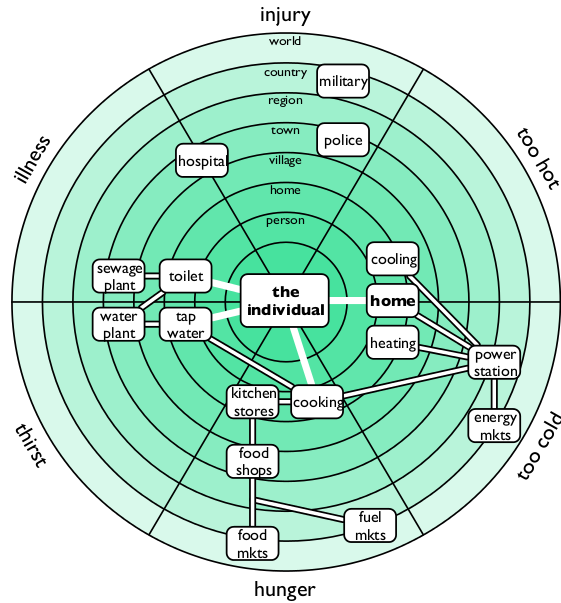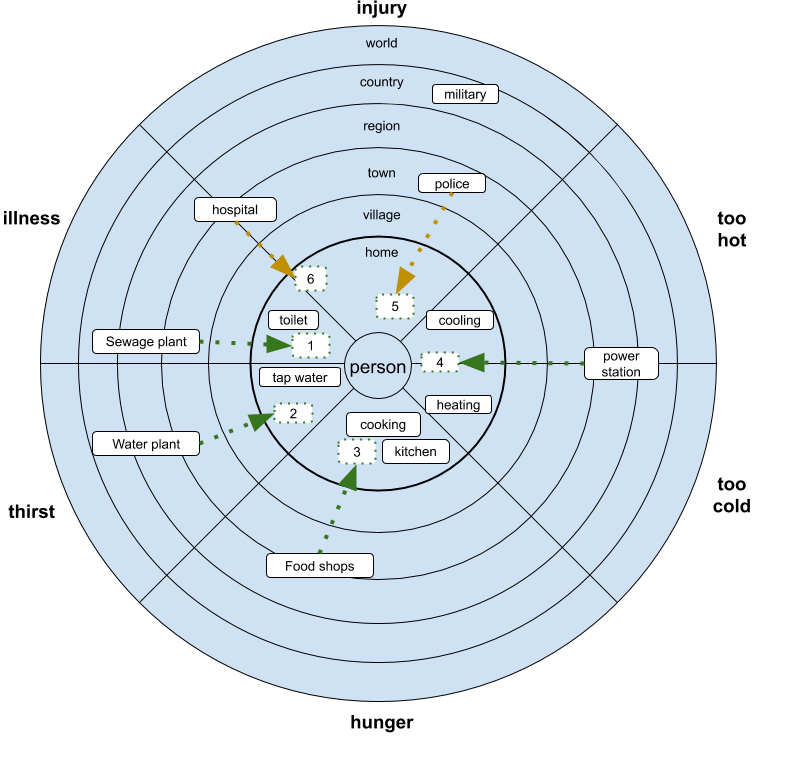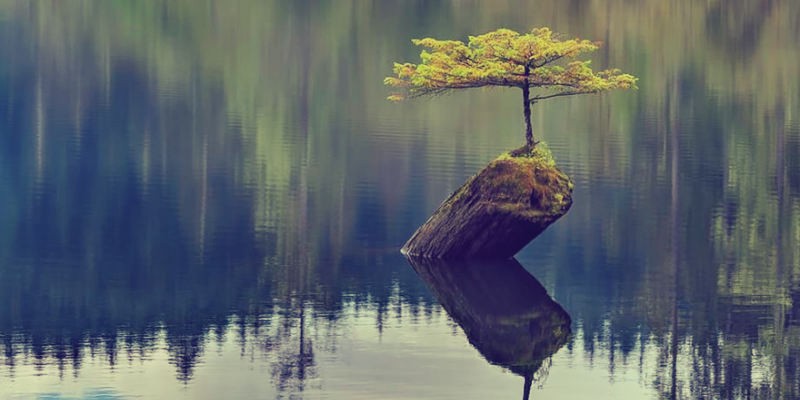At the risk of stating the obvious: the year 2020 blindsided us. It turned out to be the blackest of swans and caught us all completely unawares. So while we deal with the consequences of all that happened so far, let's think about how we can improve our lives for the next time the unexpected happens.
Vinay Gupta worked out six things that can kill us humans: extreme heat, extreme cold, hunger, thirst, illness, and injury. Then he mapped out solutions to these problems, and the scale on which they can be solved. Here's the website about this resilience map. The scale markers (from smallest to largest) are person, home, village, town, region, country, and world.

On the home scale (the scale at which I have been thinking of solutions to these causes of human discomfort or even death), a lot of technologies already exist. A house will have heating and cooling technologies to keep a person from getting too hot or too cold. It will have access to clean water to avoid thirst, bathrooms to allow safe disposal of waste (which otherwise would lead to a lot of diseases), and a kitchen to prepare food, and avoid hunger.
The AutoMicroFarm project has been concerned with pulling in another aspect of resilience: growing (and raising) most of your food at home, in a garden, food forest, aquaponics system, and other food production systems that can fit in the backyard.
Looking at the diagram, other solutions (or prerequisites to solutions) can be pulled into the home sphere. The home can become its own power station by utilizing rooftop solar and electricity storage for the energy needed to heat and cool. The heat can be supplemented with a wood-fired furnace, and the wood taken from the forest in the yard. I already mentioned the backyard food production systems that are possible. For water, catchment and filtration systems are commercially available that can be installed (in rural areas, a lot of the homes use septic tanks for waste disposal and wells coupled with filtration systems for obtaining water). Likewise, incinerating or composting toilets can be used, as well as reed beds for treating wastewater. Greywater can be filtered by gardens, then further filtered and soaked into the soil on site.
Illness and injury prevention and solutions are admittedly harder to pull into the house level. Here, partial solutions can be found in herbal remedies to treat and prevent illnesses, and home security systems to guard against injury.
For all the problems mentioned, design can minimize the scale of the solution needed. Energy efficiency means less energy needs to be captured to make a home comfortable. Compost means less (or no) plant fertilizer, or (small) animal feed, needed to be brought in from outside the home. Similarly, water conservation systems mean less water volume needed for the home. And of course, a healthy, careful lifestyle would minimize illness and injury.
Here’s the newer diagram, with some of the solutions pulled in to the home level.

- Septic tank; composting toilets; incinerating toilets; reed-bed living machines, etc.
- Wells, rainwater catchment, water filters, etc.
- Home gardens, aquaponics gardens, greenhouses, etc.
- Home solar and battery, etc.
- Home security systems, etc.
- Medicinal gardens, basic injury/illness procedures, etc.
There is of course a large caveat about all these pulled-in resilience measures. Some of the measures might get us 99% of the way to what is needed to fix the particular issue (symbolized by green arrows); others might barely get us to 50% (yellow arrows). But, this is a good start.

